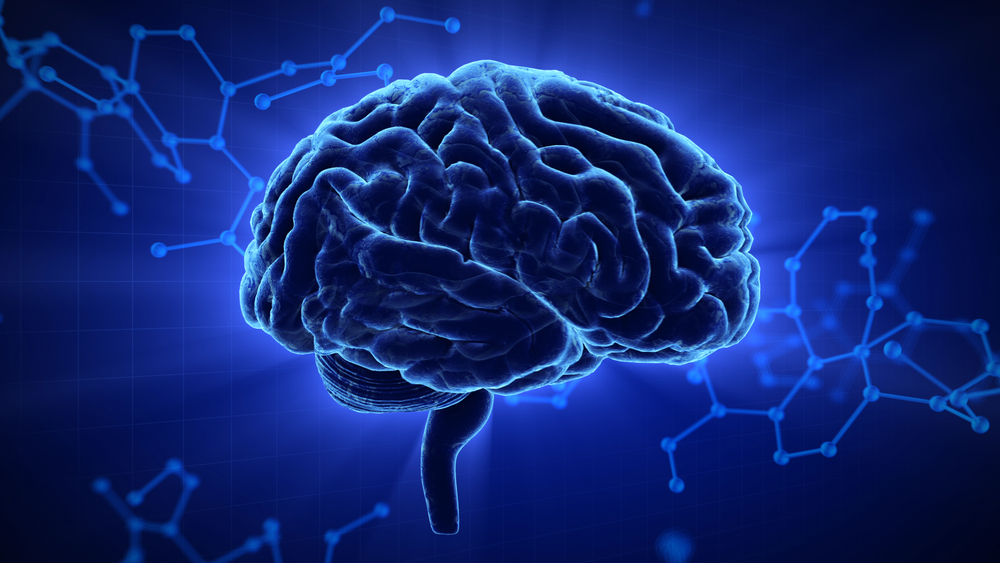GLP-1, or glucagon-like peptide-1, is a 30-amino-acid peptide produced naturally by the body. As research suggests [i], its primary function may be safeguarding pancreas cells by increasing insulin gene production and lowering blood sugar levels. Further research speculates it may help delay stomach evacuation, which reduces hunger.
The body’s normal production of GLP-1 decreases over time in diseases like diabetes. To counteract this deficit and potentially provide different properties, synthetic peptides that imitate GLP-1, like Semaglutide, have become crucial in research studies.
Semaglutide History
Studies suggest synthetic glucagon-like peptide-1 (GLP-1) analogs like Semaglutide peptide have been developed for diabetes research. As suggested by clinical trials, Semaglutide, as a GLP-1 receptor ligand, may have the potential to lower insulin levels, suppress hunger, and aid in managing both obesity and diabetes. [ii] Since its synthesis and development in 2012, Semaglutide has been intensively studied.
Semaglutide’s Mechanism of Action
New studies suggest that the peptide may exert its impacts via several distinct mechanisms, such as:
- By blocking liver glucose production and potentially reducing glucagon secretion upon interaction with GLP-1 receptors [iii], insulin secretion is stimulated, resulting in glucose-dependent insulin release.
- Potentially enhancing pancreas beta cell activity and lowering the body’s proinsulin to insulin ratio [iv], delaying stomach movement, decreasing hunger, and resulting in lower body weight. [v]
Semaglutide Peptide Properties
Research suggests that possible properties of Semaglutide include the following:
- Potentially shielding pancreatic beta cells
- Potentially lowering blood sugar levels
- Potentially controlling appetite
- Potentially aiding heart function
- Potentially aiding the nervous system
Semaglutide Peptide and Incretin Levels
Most studies on Semaglutide peptides have focused on a phenomenon called the “incretin effect.” Blood sugar levels drop after eating because of a hormone called incretin, secreted by the intestines.
Researchers speculate that Semaglutide peptide appears to attach to GLP-1 receptors expressed on the surface of beta cells in the pancreas. This connection appears to have the same impact as incretin, potentially increasing insulin production and lowering blood sugar levels. Thus, the concept of an “incretin impact” emerged. [ii]
“The primary effects of GLP-1 are to induce insulin secretion (i.e., to function as an incretin hormone) and to suppress glucagon secretion, thereby helping to restrict postprandial glucose surges,” says researcher J. J. Holst. Semaglutide peptide, a GLP-1 receptor ligand, may potentially aid in creating incretin hormones and control blood sugar levels, as suggested by speculations made by licensed professionals.
Semaglutide Peptide and Hunger
Experts suggest that Semaglutide peptide and other GLP-1 receptor ligands may slow the movement of gastric juice, making subjects feel satiated for longer.
Semaglutide, a peptide studied in the lab, may aid in the slow reduction of extra weight, improving cardiac health and boosting endurance, as suggested by these studies.
A comparable incretin mimic substance was tested in an experimental trial [vi] with test subjects over 82 weeks. During the research, this substance was presented to all research models. It was speculated that all subjects lost a substantial amount of weight and improved physical activity by the end of the research.
Semaglutide Peptide and Pancreatic Beta Cells
The effects of obesity and diabetes on rodent models were investigated [vii] using non-obese and diabetic mouse strains. Semaglutide and Lisofylline or Semaglutide and Exendin-4 mixtures were given to these rodents.
Research suggested that Exendin-4 may promote beta cell growth, and lisofylline may inhibit the immune system’s functionality. This research speculated that the peptide might promote the expansion of pancreas beta cells and inhibit cellular demise (i.e., cellular death).
The findings of this and similar studies imply that the peptide may aid in pancreatic beta-cell protection. Furthermore, optimal blood glucose levels were sustained for at least 145 days after discontinued peptide delivery.
Semaglutide Peptide and Brain Research
Research suggests the GLP-1 receptor, or GLP-1R, may be essential in enhancing cognitive (learning) skills [vii]. Brain cells express both GLP-1 and its receptor GLP-1R. Seizures, impaired learning, and brain or nervous system damage result from insufficient GLP-1R in the brain. Studies speculate that Semaglutide peptide is a synthesized analog of glucagon-like peptide-1 (GLP-1) and may comparably attach to the GLP-1R receptor, improving subjects’ capacity for learning.
“Systemic presentation of GLP-1 receptor ligands in wild-type mice inhibits kainate-induced death of hippocampus neurons,” as proposed by Mathew J During et al. The GLP-1R in the brain may be an exciting novel target for improving cognition and protecting nerve cells, as speculated by researchers.
Another study [viii] implied that the GLP-1 peptide and its analogs might shield the hippocampus from cellular death. Similar investigations have speculated that the peptide could lower levels of beta amyloids in brain synapses. Still, there is cause to speculate that Semaglutide peptide could avoid or at least regulate the buildup of such amyloids. [ix]
Only academic and scientific institutions are permitted to use Semaglutide peptides. If you are a researcher interested in purchasing Semaglutide peptides for your clinical studies, visit CorePeptides.com. Please note that none of the items listed are approved for human or animal consumption. Laboratory research chemicals are only for in-vitro and in-lab use. Any kind of physical introduction is illegal. Only authorized academics and working professionals may make purchases. The content of this article is intended only for instructional purposes.
References
[i] National Center for Biotechnology Information (2023). PubChem Compound Summary for CID 16133830, Glucagon-like Peptide-1 (7-37). https://pubchem.ncbi.nlm.nih.gov/compound/Glucagon-like-Peptide-1-_7-37
[ii] Mahapatra MK, Karuppasamy M, Sahoo BM. Semaglutide is a glucagon-like peptide-1 receptor agonist with cardiovascular benefits for the management of type 2 diabetes. Rev Endocr Metab Disord. 2022 Jun;23(3):521-539. doi: 10.1007/s11154-021-09699-1. Epub 2022 Jan 7. PMID: 34993760; PMCID: PMC8736331. https://www.ncbi.nlm.nih.gov/pmc/articles/PMC8736331/
[iii] Knudsen LB, Lau J. The Discovery and Development of Liraglutide and Semaglutide. Front Endocrinol (Lausanne). 2019 Apr 12;10:155. doi: 10.3389/fendo.2019.00155. PMID: 31031702; PMCID: PMC6474072. https://pubmed.ncbi.nlm.nih.gov/31031702/
[iv] Ahmann AJ, Capehorn M, Charpentier G, Dotta F, Henkel E, Lingvay I, Holst AG, Annett MP, Aroda VR. Efficacy and Safety of Once-Weekly Semaglutide Versus Exenatide ER in Subjects With Type 2 Diabetes (SUSTAIN 3): A 56-Week, Open-Label, Randomized Clinical Trial. Diabetes Care. 2018 Feb;41(2):258-266. doi: 10.2337/dc17-0417. Epub 2017 Dec 15. PMID: 29246950. https://pubmed.ncbi.nlm.nih.gov/29246950/
[v] Christou GA, Katsiki N, Blundell J, Fruhbeck G, Kiortsis DN. Semaglutide as a promising anti-obesity drug. Obes Rev. 2019 Jun;20(6):805-815. doi: 10.1111/obr.12839. Epub 2019 Feb 15. PMID: 30768766. https://pubmed.ncbi.nlm.nih.gov/30768766/
[vi] Blonde L, Klein EJ, Han J, Zhang B, Mac SM, Poon TH, Taylor KL, Trautmann ME, Kim DD, Kendall DM. Interim analysis of the effects of exenatide treatment on A1C, weight and cardiovascular risk factors over 82 weeks in 314 overweight patients with type 2 diabetes. Diabetes Obes Metab. 2006 Jul;8(4):436-47. doi: 10.1111/j.1463-1326.2006.00602.x. PMID: 16776751. https://pubmed.ncbi.nlm.nih.gov/16776751/
[vii] During MJ, Cao L, Zuzga DS, Francis JS, Fitzsimons HL, Jiao X, Bland RJ, Klugmann M, Banks WA, Drucker DJ, Haile CN. The glucagon-like peptide-1 receptor is involved in learning and neuroprotection. Nat Med. 2003 Sep;9(9):1173-9. doi: 10.1038/nm919. Epub 2003 Aug 17. PMID: 12925848. https://pubmed.ncbi.nlm.nih.gov/12925848/
[viii] Perry T, Haughey NJ, Mattson MP, Egan JM, Greig NH. Protection and reversal of excitotoxic neuronal damage by glucagon-like peptide-1 and exendin-4. J Pharmacol Exp Ther. 2002 Sep;302(3):881-8. doi: 10.1124/jpet.102.037481. PMID: 12183643. https://pubmed.ncbi.nlm.nih.gov/12183643/
[ix] Perry TA, Greig NH. A new Alzheimer’s disease interventive strategy: GLP-1. Curr Drug Targets. 2004 Aug;5(6):565-71. doi: 10.2174/1389450043345245. PMID: 15270203. https://pubmed.ncbi.nlm.nih.gov/15270203/








Leave a Reply
You must be logged in to post a comment.